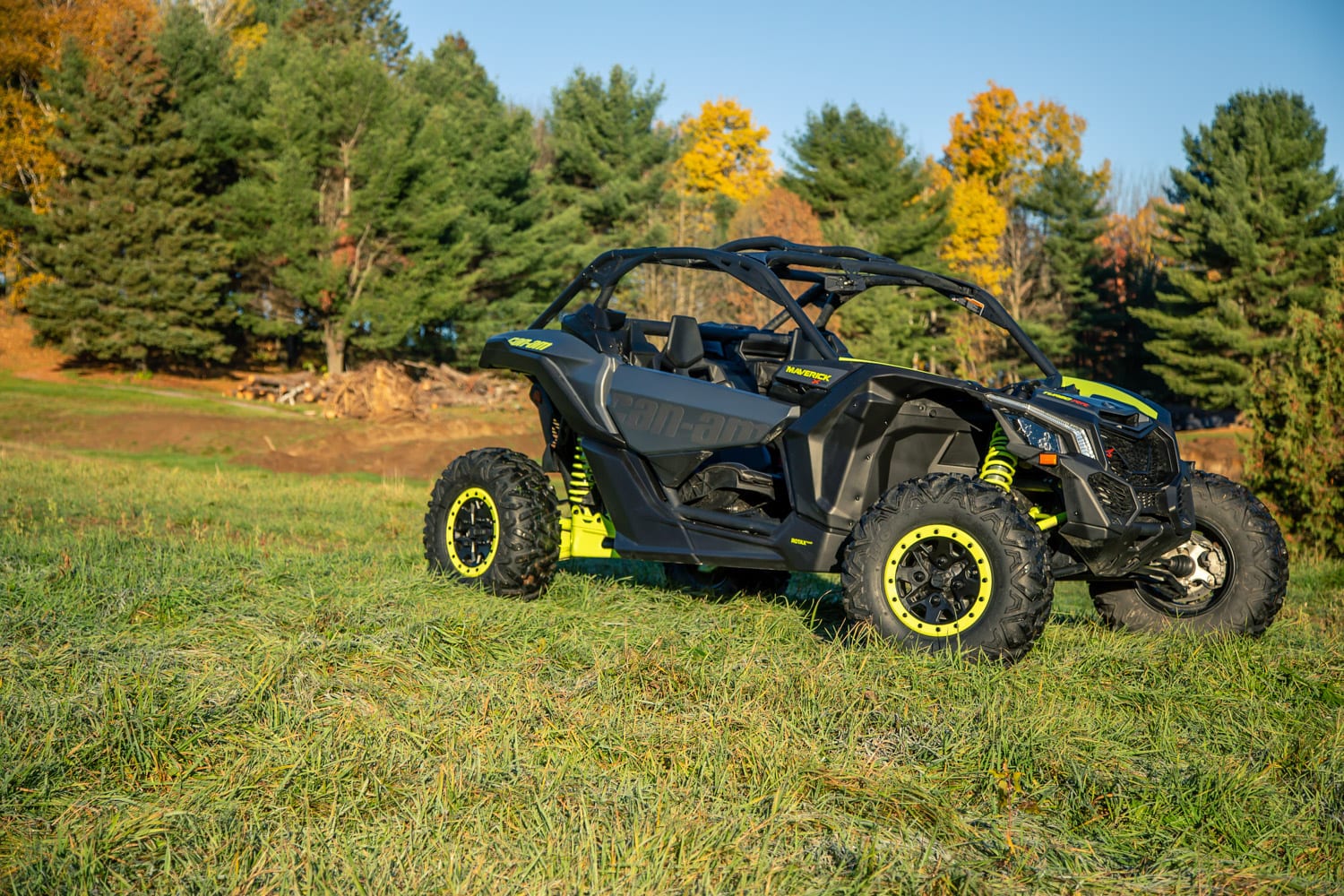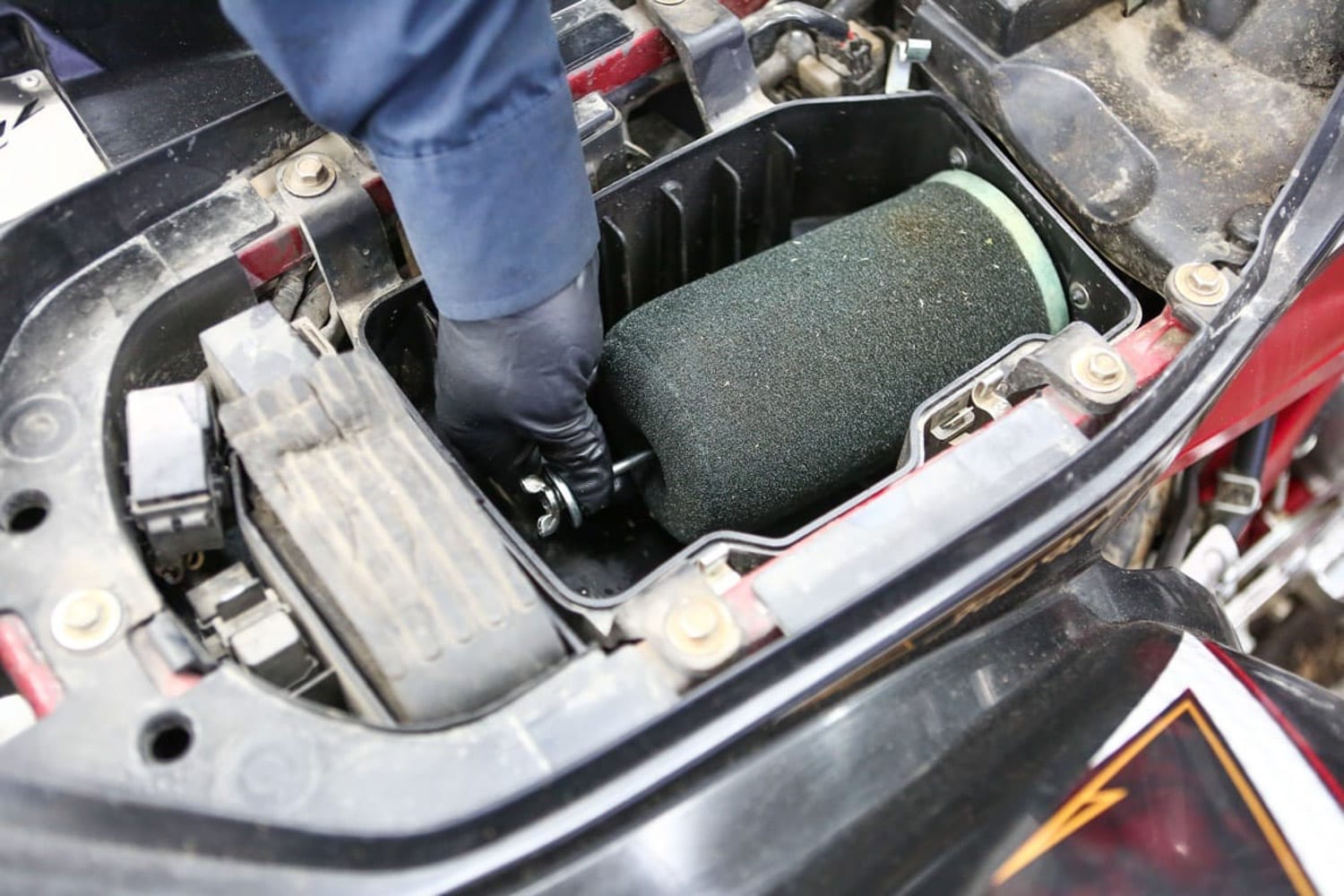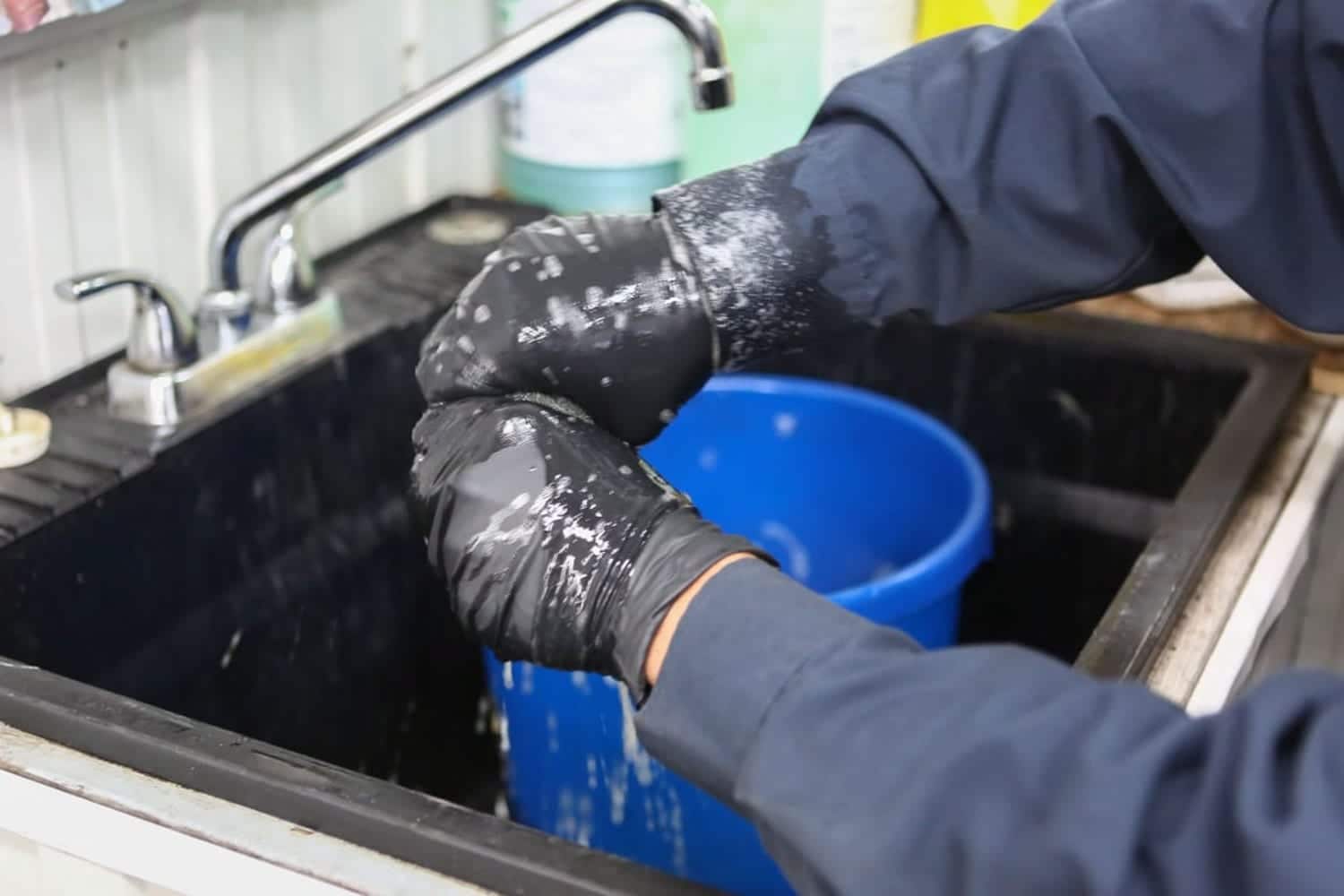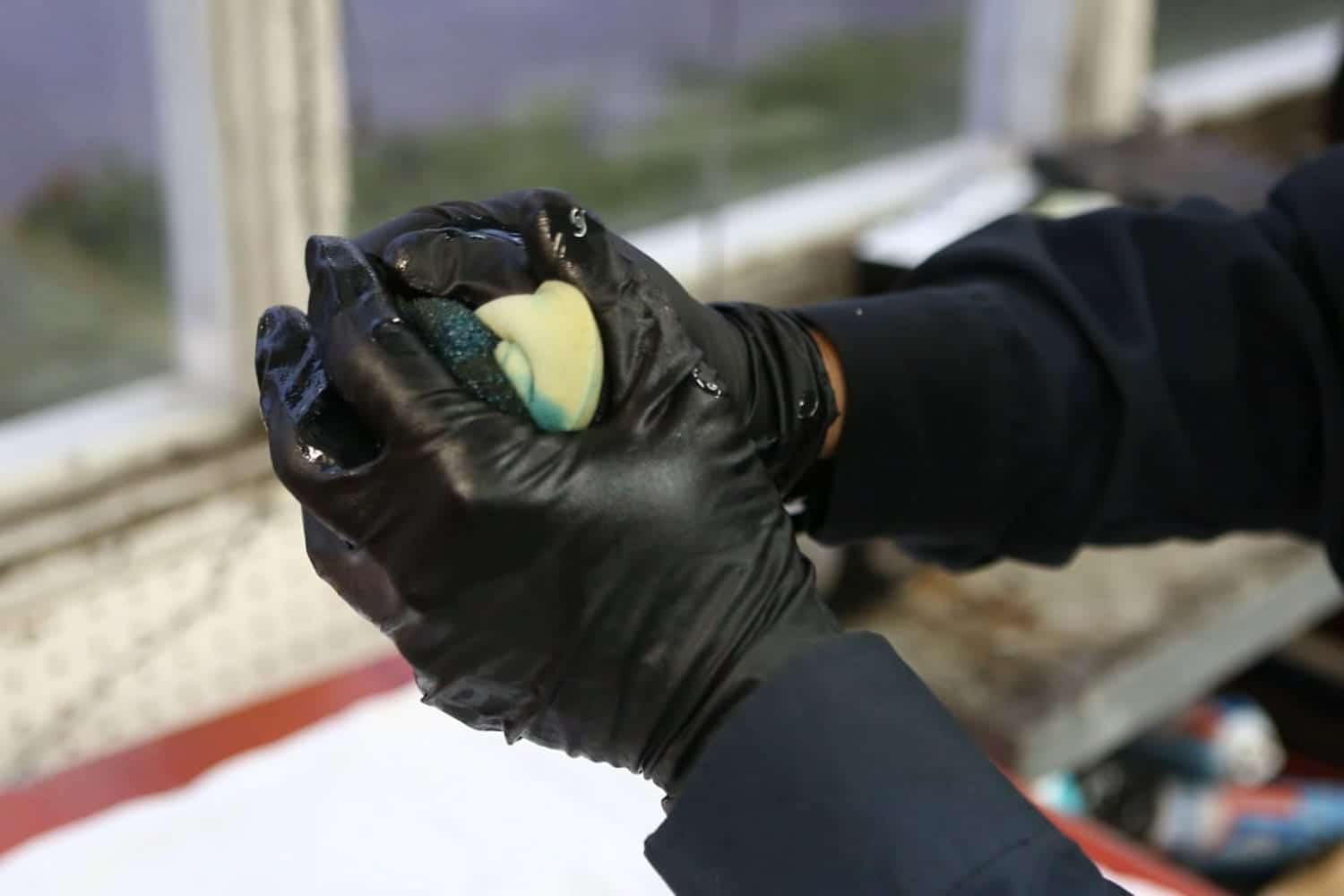Some regular checks are recommended on your return from a ride, to ensure your vehicle is in perfect condition for the next one. Keep in mind that even if an off-road machine is built to withstand intense abuse, it is not invincible. It is exposed to several elements that can partially or entirely damage some of its components.
The following is a shortlist of inspections recommended for quad owners and can easily be done even with little mechanical knowledge.
Washing
Cleaning may be an unpleasant moment for some people, but it is an important step for others. The purchase of a quad vehicle is a significant expense, and keeping the machine clean is one way to ensure it retains its full resale value.
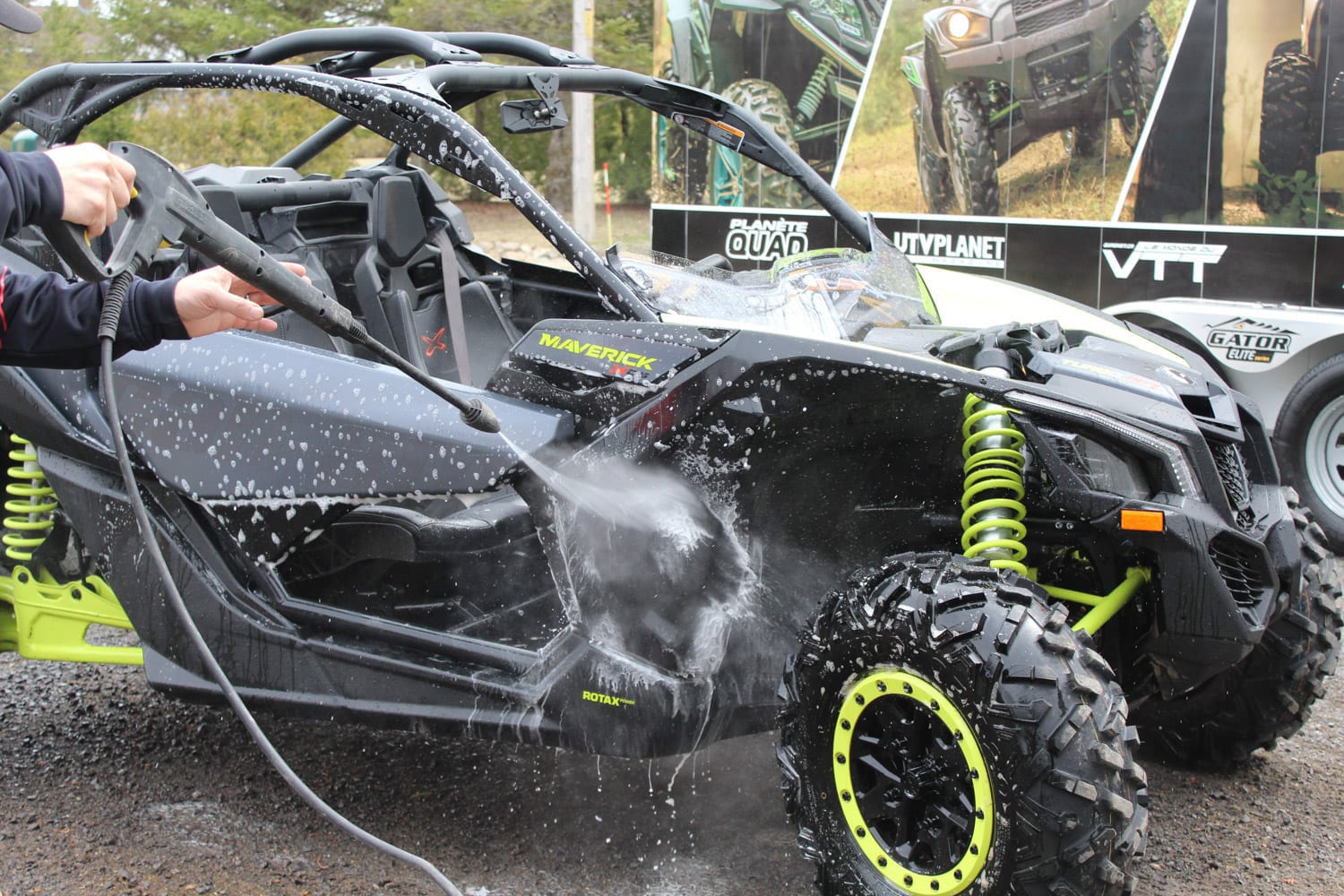
Mud, dirt, and all kinds of material we encounter on the trails stick in many places on our quads. If you let them sit too long on the vehicle, you’ll regret it when the rust demons start to eat it away.
Mud and dirt can also affect the performance of the engine. They can get into the air filter, causing you to clean it more often, and dust can clog vents and other parts of your machine.
Visual inspection
Inspect the vehicle from all angles, paying particular attention to any leak of fluids. If you see something suspicious, call your dealer for their expertise and possible repair. Do not overlook this critical finding; otherwise, a substantial expense will likely have to be considered.
The radiator
This part may seem insignificant, but it will not allow the engine to cool efficiently when blocked. Ensure the radiator cooling fins are clean and inspect the radiator tubes to ensure they have not been damaged by debris, causing a coolant leak.
Do not use a pressure washer, which could damage the fragile fins. Instead, use a garden hose, and with a back and forth motion, gradually dislodge the mud.
Air filter maintenance
I know I’m repeating myself, but the air filter is one of the vital parts of an engine, providing a clean air supply while retaining abrasive particles. Its maintenance should be meticulous in the summer when the dust is everywhere. On the other hand, in winter we can opt-out of this job for obvious reasons.

When cleaning paper air filters, use only water and cleaning solvent. Do not use abrasive brushes, aggressive chemicals, or compressed air. They can cause invisible damage to the filter and will eventually allow particles to pass through and damage the engine. So, let it air dry completely.
The foam filter requires a little more work. First, wash it by hand. Use gloves to avoid unnecessary exposure to toxins and other carcinogens. Fill a bucket with hot water and the appropriate cleaning solution. Some soaps and detergents can damage the filter, so be sure to use the proper cleaner. And for God’s sake, please do not use gasoline!
Thoroughly wash the foam filter by hand, but don’t wring it out or rub it too hard. Let the cleaning solution work for you. You can wash off the excess water, but that’s about it. Rinse thoroughly and allow it to air dry.
If the air filter needs cleaning, so does the airbox. Clean up the dust or sand that you find there. Use a solvent to remove any residual grease or oil in the airbox. While at it, inspect the airbox cover seal to make sure it isn’t pinched or cracked, compromising its effectiveness. A good cover seal will prevent water, mud, and debris from entering the engine through the air intake.
Now that the foam air filter is dry, it is time to apply an oily substance. There are many methods of oiling an air filter. You can massage the oil with your gloved hands. Another less messy and probably more efficient option is to put the filter and the oil in a plastic bag and roll / squeeze / massage the filter until it is completely covered in oil. Make sure the oil is distributed evenly without heavily oiled spots. There is also oil spray designed specifically for foam air filters. This option is easier for the oil application.
Lubrication
Pay particular attention to the lubrication points on your vehicle. Although adding grease is unnecessary after each ride, a periodic check is a good idea to prevent premature wear of these moving parts.
Tire pressure
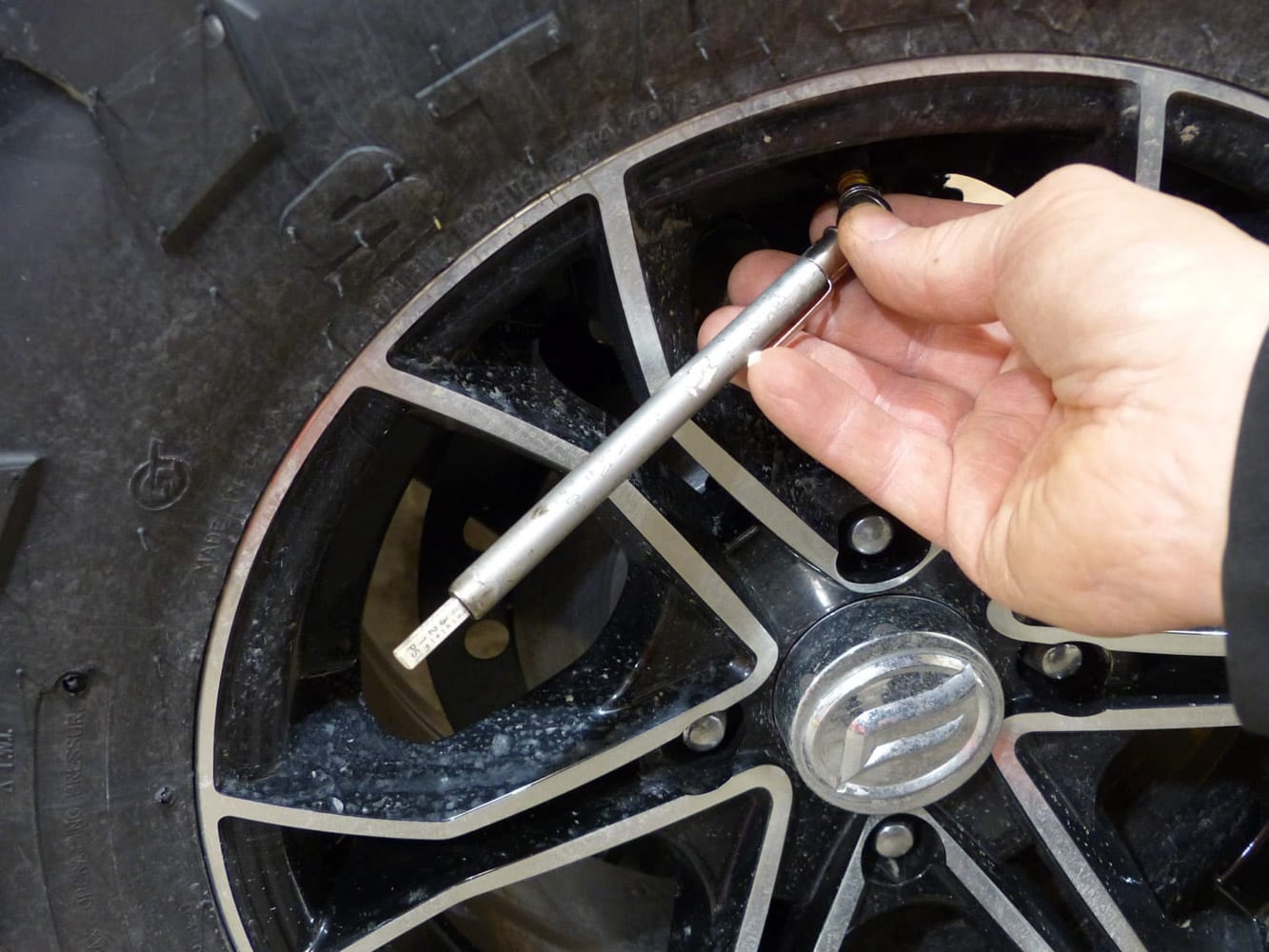
Do a quick tire pressure check. Use an ATV tire pressure gauge, as automotive tire pressure gauges are not accurate enough at such low pressures.
In conclusion, if you carry out these preventive checks, your vehicle will be in good working order on your next ride. They will also allow you to know your quad’s general condition and ensure you have carefree outings.


